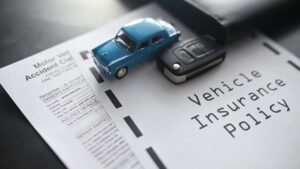Small business owners, startups, and entrepreneurs wear many hats—manager, marketer, problem-solver, and yes, budget keeper. If you own or operate vehicles for your business, you’re probably familiar with the high costs associated with commercial auto insurance. While insurance is essential for protecting your investments, employees, and customers, the premiums can often feel like a significant burden. But here’s the good news—you can save money on auto insurance without compromising the coverage your business needs.
This guide will walk you through everything you need to know, from understanding your coverage options to implementing smart cost-saving strategies that still keep your business fully protected.
Understanding Auto Insurance for Businesses
Before digging into cost-saving tips, it’s essential to understand the basics of commercial auto insurance and why it matters.
Types of Coverage Available
Commercial auto insurance offers several coverage options tailored to businesses, including:
- Liability Coverage: Covers bodily injury or property damage costs to others in the event of an accident.
- Collision Coverage: Covers repair or replacement costs for your vehicle after an accident.
- Comprehensive Coverage: Protects against non-collision-related risks like theft, vandalism, or natural disasters.
- Uninsured/Underinsured Motorist Coverage: Protects you if the other driver lacks adequate insurance.
- Hired and Non-Owned Auto Insurance: Ideal for businesses using rented or employee-owned vehicles.
Legal Requirements
Each state has its own minimum requirements for business auto insurance. Fulfilling these requirements is mandatory, but going beyond minimum coverage can provide better protection against unexpected events. To avoid fines, lawsuits, or operational disruptions, ensure your business complies with state laws.
Understanding these coverage types will help you make informed decisions when adjusting your auto insurance policy.
Factors Affecting Auto Insurance Rates
Insurance premiums are influenced by several factors, many of which are within your control. Knowing what affects your rates can empower you to take proactive measures to reduce costs.
Common Factors
- Driving History: Businesses with a clean driving history typically pay lower premiums.
- Vehicle Type: Larger, more expensive vehicles usually cost more to insure.
- Coverage Limits: Higher coverage limits lead to higher premiums—but also better protection.
- Business Location: Urban areas often have higher premiums compared to rural areas due to increased risk of accidents or theft.
- Claim History: A history of frequent claims can lead to higher premiums.
Tips to Manage These Factors
- Encourage safe driving habits among employees and provide training programs.
- Choose vehicles with safety features that lower premium costs.
- Regularly review your coverage and adjust limits to balance cost and protection.
Cost-Saving Strategies for Small Business Auto Insurance
Now that we’ve covered the basics, it’s time to explore actionable strategies to lower your premiums while maintaining robust coverage.
1. Bundle Your Insurance Policies
Many insurance providers offer discounts if you bundle multiple policies. For instance, combining auto insurance with general liability or property insurance can lead to significant savings. Plus, dealing with one provider simplifies communication and billing.
2. Implement Safety Measures
Safety isn’t just good for employees—it’s good for your budget. Here’s how:
- Install Dashcams: These can provide evidence after accidents and discourage reckless driving.
- Add Anti-Theft Devices: Installing GPS trackers or alarms can reduce theft-related claims, lowering premiums.
- Start a Fleet Safety Program: Invest in training programs to decrease the likelihood of accidents.
3. Review Coverage Regularly
Has your business changed recently? Perhaps you’ve sold a vehicle, reduced usage frequency, or hired fewer drivers. Regularly reviewing your policy ensures you’re not paying for coverage you don’t need. Partner with a knowledgeable broker who can help identify areas for adjustment.
4. Raise Deductibles
If your business can afford higher out-of-pocket costs for claims, raising your deductible is a quick way to lower your monthly premiums.
5. Leverage Trade-Specific Discounts
Some providers specialize in insuring businesses within certain industries. Ask about trade-specific discounts for your business type.
The Impact of Technology on Auto Insurance Costs
It’s 2024, and technology is your secret weapon when it comes to cutting insurance costs. Here’s how innovative tools are making a difference:
Telematics
Telematics devices track driver behavior, including speed, braking, and mileage. Insurers often reward businesses for adopting telematics with lower rates as these tools encourage safer driving.
AI-Driven Analytics
AI tools analyze risk factors and help identify the most cost-effective coverage options for your business. Some insurance companies even offer apps to keep you updated on your risk profile in real time.
Fleet Management Software
Software like Fleet Complete or Samsara enhances operational efficiency and tracks driver performance, reducing accidents and ultimately, insurance premiums.
Case Studies: Real-Life Examples of Cost Savings
No theory here—just real examples of businesses that successfully reduced their auto insurance costs.
Case Study 1: Urban Delivery Startup
An urban delivery company in Boston installed GPS trackers and telematics systems in all their vehicles. Over a year, the company reduced speeding incidents by 20%, leading to a 15% drop in premiums.
Case Study 2: Cleaning Business Bundle
A small cleaning business in Texas bundled its auto insurance with workers’ compensation and liability insurance. This move saved the owner $1,200 annually.
Case Study 3: Seasonal Landscaping Business
A landscaping company reviewed its auto policy and adjusted coverage for off-season months when vehicles were rarely used. They saved 10% on their annual premium.
These examples show the power of taking proactive steps to manage insurance costs.
Build a Smarter Auto Insurance Plan Today
Managing commercial auto insurance doesn’t have to be a financial burden. By understanding your policy options, analyzing factors that impact rates, and implementing cost-saving strategies, your business can stay protected without overspending.
Take a page out of the many successful businesses we’ve discussed—proactively manage your policy, explore technology tools, and prioritize safety. Have your own tips or success stories? Share them in the comments below. Together, we can create a strong, financially savvy community of business owners!




